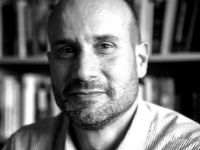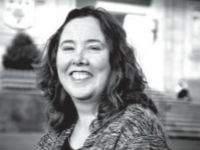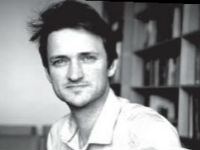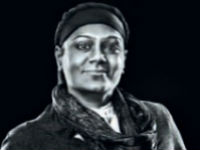Amid a host of Birmingham success stories in REF 2014, the Department of History’s results stood out as being particularly exceptional. Ranked first overall in the country by Times Higher Education, Birmingham’s history research scored highly for output, impact and environment – a rare example of across-the-board excellence.
This success, according to Professor Matthew Hilton, Director of Research for the College of Arts and Law at the time of the REF submission, can be put down to two main factors. ‘First, and most importantly, the quality of staff is exceptional,’ says Professor Hilton. ‘In recent years we have made a number of strategic appointments, taking advantage of our extensive network of contacts and knowledge of the global marketplace to appoint some very talented young researchers from institutions such as Oxford, Cambridge, Harvard and Yale.
‘Second, we made sure we had strong submissions in each of the constituent elements of the REF – output, impact and environment.’
Birmingham’s history submission was initially led by Dr Francesca Carnevali, who sadly passed away in 2013. ‘Francesca, and subsequently Professor Sabine Lee, did a lot of the hard work in preparing our REF submission,’ says Professor Hilton. ‘We also had superb support from the Research and Knowledge Transfer office and the Planning Office. Our success was down to the sheer amount of hard work that was put in – but we also made some tough decisions about what was worthy of submission and what wasn’t.
‘We were particularly pleased that our highest quality research came from across the board – from our new appointments through to our most senior staff, and even those otherwise absorbed with senior management roles, including the Head of School, Professor Corey Ross. The best history departments are those that allow staff at all stages of their career to thrive.’
History research at Birmingham is organised into a number of centres, including the Centre for the Study of the Middle Ages, the Centre for Reformation and Early Modern Studies, the Centre for Modern and Contemporary History, and the new Centre for Modern British Studies. This, says Professor Hilton, gives researchers the sense of being part of a community and of ‘belonging to something bigger’ – an important feeling to create in a large department with a strong focus on teaching.
Looking ahead to REF 2020, history at Birmingham is well placed to maintain its position as the number one department in the country – and, through a potential dynamic investment fund from the University, to continue its successful recruitment strategy.
Research profiles
Professor of Modern History, Head of the School of History and Cultures
 ‘I am currently working on an environmental history of the heyday of European imperialism, from roughly 1880 to 1960. The project explores the environmental transformations and interconnections associated with the explosive growth of commodity production and global trade in the tropical regions under European control – transformations that still visibly shape our world today – and how they fitted into broader patterns of social, cultural and political change. This concerns not only the impact of European (British, French, German, Dutch and Belgian) attempts to harness tropical ecosystems for economic gain, but the role of indigenous patterns of resource use and colonial conservation efforts. This represents a new departure in my research after several books on post-war Germany and the history of the media and popular culture in the 19th and 20th centuries, though it reflects an abiding interest in environmental issues that stretches back to my undergraduate studies in biology, before the thought of being a historian had ever crossed my mind.’
‘I am currently working on an environmental history of the heyday of European imperialism, from roughly 1880 to 1960. The project explores the environmental transformations and interconnections associated with the explosive growth of commodity production and global trade in the tropical regions under European control – transformations that still visibly shape our world today – and how they fitted into broader patterns of social, cultural and political change. This concerns not only the impact of European (British, French, German, Dutch and Belgian) attempts to harness tropical ecosystems for economic gain, but the role of indigenous patterns of resource use and colonial conservation efforts. This represents a new departure in my research after several books on post-war Germany and the history of the media and popular culture in the 19th and 20th centuries, though it reflects an abiding interest in environmental issues that stretches back to my undergraduate studies in biology, before the thought of being a historian had ever crossed my mind.’
Senior Lecturer in Early Modern History
 ‘Scholarship has tended to emphasise the destructive and ‘iconophobic’ impulses of the Reformation; the rich artistic heritage of late-medieval Catholicism contrasted with an austere Protestant culture of the word. According to the standard view, religious art had no place in post-reformation Britain. My study presents a wealth of little-known buildings and artefacts to argue that religious imagery remained ubiquitous and significant in people’s daily lives. I identified a widespread fashion for large-scale biblical scenes in the decoration of houses owned by the gentry and prosperous middling sort during the period 1560-1660, which is interpreted in relation to the social and spiritual functions of the household. My study demonstrates that, far from being hostile towards images, a great many Protestant patrons chose to invest in traditional religious imagery to adorn their houses and thereby promote an atmosphere of piety to inform and support devotional behaviours.’
‘Scholarship has tended to emphasise the destructive and ‘iconophobic’ impulses of the Reformation; the rich artistic heritage of late-medieval Catholicism contrasted with an austere Protestant culture of the word. According to the standard view, religious art had no place in post-reformation Britain. My study presents a wealth of little-known buildings and artefacts to argue that religious imagery remained ubiquitous and significant in people’s daily lives. I identified a widespread fashion for large-scale biblical scenes in the decoration of houses owned by the gentry and prosperous middling sort during the period 1560-1660, which is interpreted in relation to the social and spiritual functions of the household. My study demonstrates that, far from being hostile towards images, a great many Protestant patrons chose to invest in traditional religious imagery to adorn their houses and thereby promote an atmosphere of piety to inform and support devotional behaviours.’
Lecturer in Modern Middle Eastern History
 ‘I am completing a book about economic development in the colonial Middle East after World War One. I’m broadly interested in how different groups imagined the economic and social future, even before they lived in independent nation states – for example, writers who dreamt of turning Lebanon into an agriculturally self-sufficient country; imperial officials who wanted to turn it into a tourist hub; or Beirut residents who boycotted expensive public transport. I also write about the international dimensions of these projects, such as the import of Fords from Detroit to the Middle East, and how they changed everyday life, and the role of the League of Nations in providing a forum for criticism about the failure of colonial empire’s developmental promises.’
‘I am completing a book about economic development in the colonial Middle East after World War One. I’m broadly interested in how different groups imagined the economic and social future, even before they lived in independent nation states – for example, writers who dreamt of turning Lebanon into an agriculturally self-sufficient country; imperial officials who wanted to turn it into a tourist hub; or Beirut residents who boycotted expensive public transport. I also write about the international dimensions of these projects, such as the import of Fords from Detroit to the Middle East, and how they changed everyday life, and the role of the League of Nations in providing a forum for criticism about the failure of colonial empire’s developmental promises.’
Senior Lecturer in Modern History
 ‘Throughout the 1800s foreigners, from ‘Aztecs’ to Zulus, were imported into London to perform cultural rites. Beginning as small entrepreneurial ventures, such shows became vast complexes of ‘native villages’ that were seen by millions of visitors to world fairs. Performers sometimes created careers and settled abroad. Many histories assumed that ethnic difference alone underpinned commercial success and ignored their scientific legacies. My book, Peoples on Parade, argues that even in an ethnically diverse metropolis, patrons were willing to pay to interact with unfamiliar and politically relevant peoples, such as Farini’s Friendly Zulus during the 1879 Anglo-Zulu War. Anthropologists also used performers to theorise about race and train new practitioners. Thus, the shows underpinned new conceptions of being human in the modern world.’
‘Throughout the 1800s foreigners, from ‘Aztecs’ to Zulus, were imported into London to perform cultural rites. Beginning as small entrepreneurial ventures, such shows became vast complexes of ‘native villages’ that were seen by millions of visitors to world fairs. Performers sometimes created careers and settled abroad. Many histories assumed that ethnic difference alone underpinned commercial success and ignored their scientific legacies. My book, Peoples on Parade, argues that even in an ethnically diverse metropolis, patrons were willing to pay to interact with unfamiliar and politically relevant peoples, such as Farini’s Friendly Zulus during the 1879 Anglo-Zulu War. Anthropologists also used performers to theorise about race and train new practitioners. Thus, the shows underpinned new conceptions of being human in the modern world.’